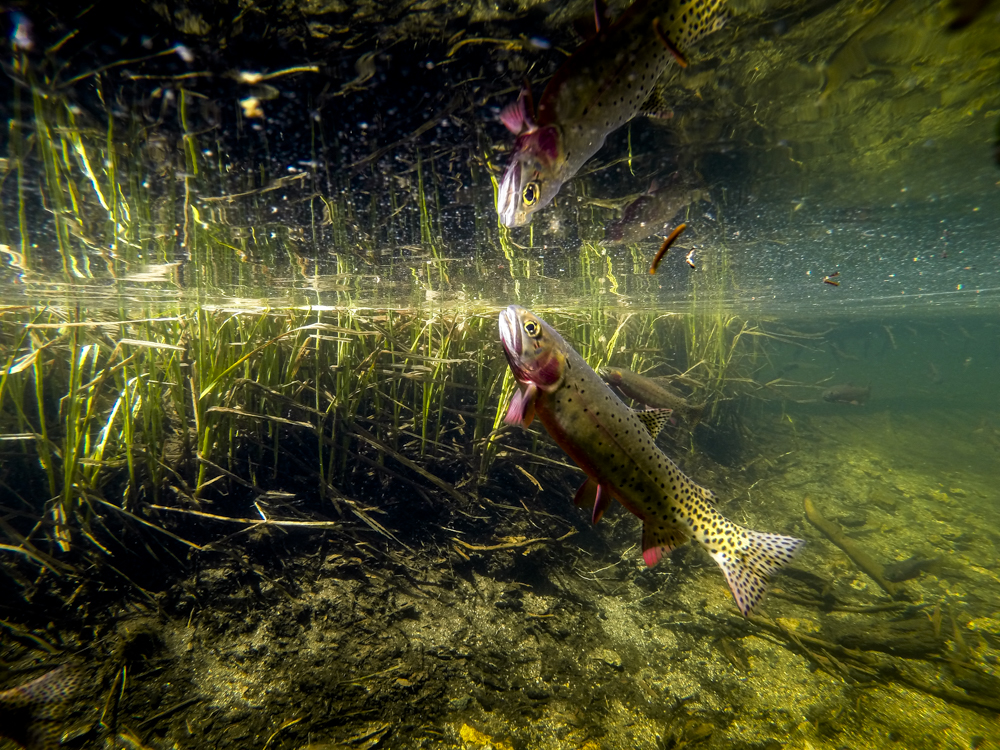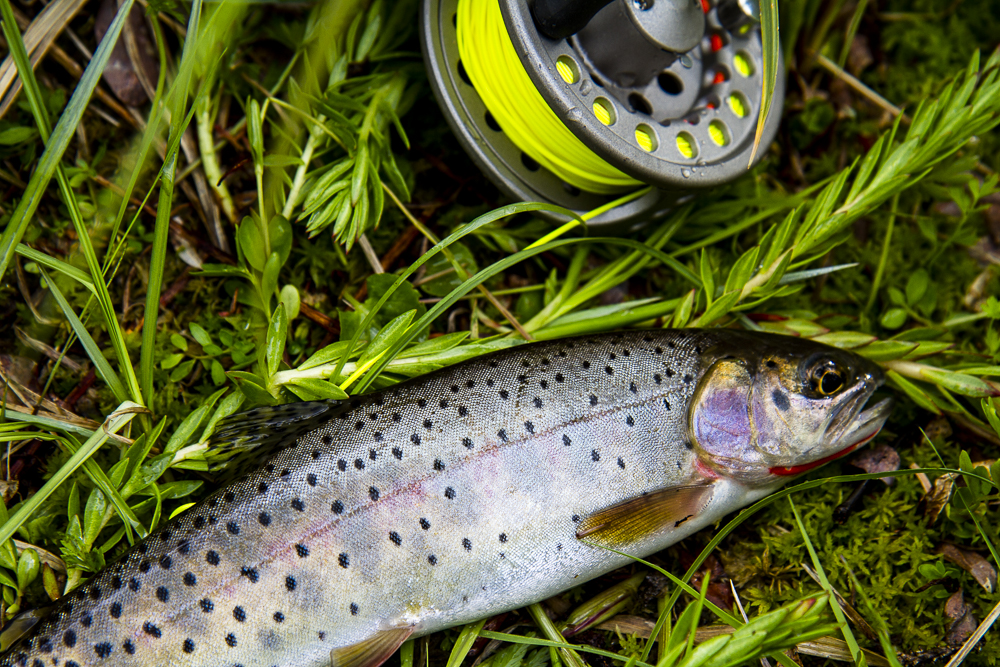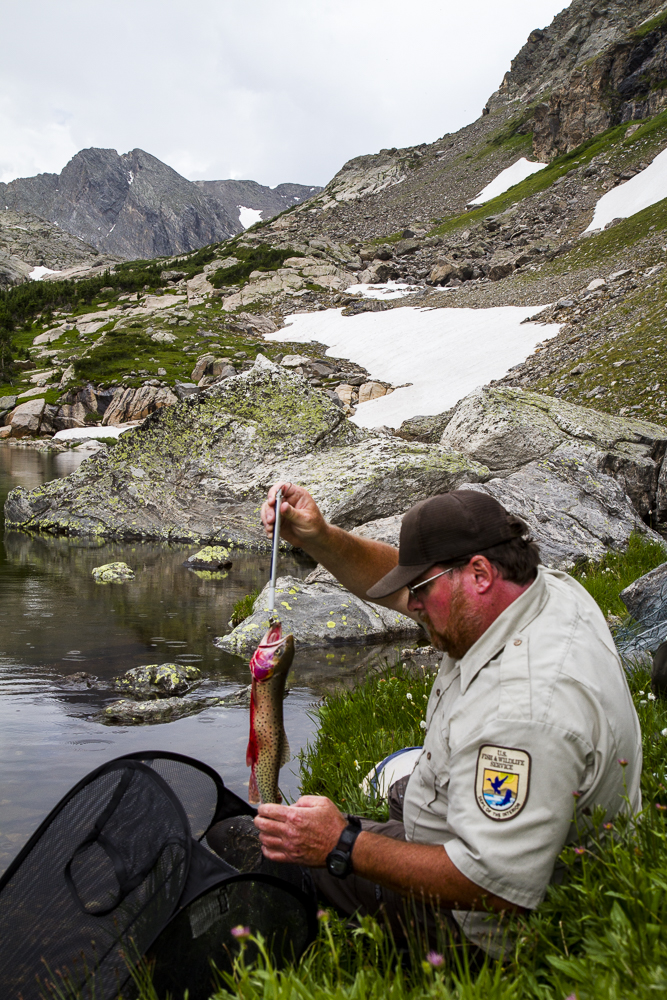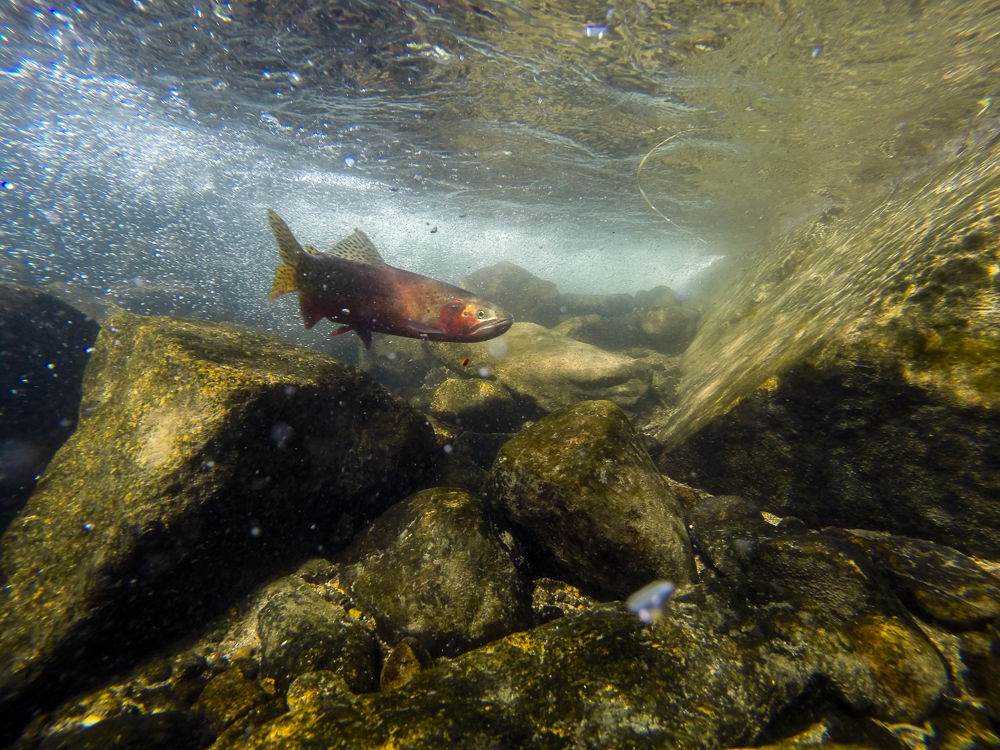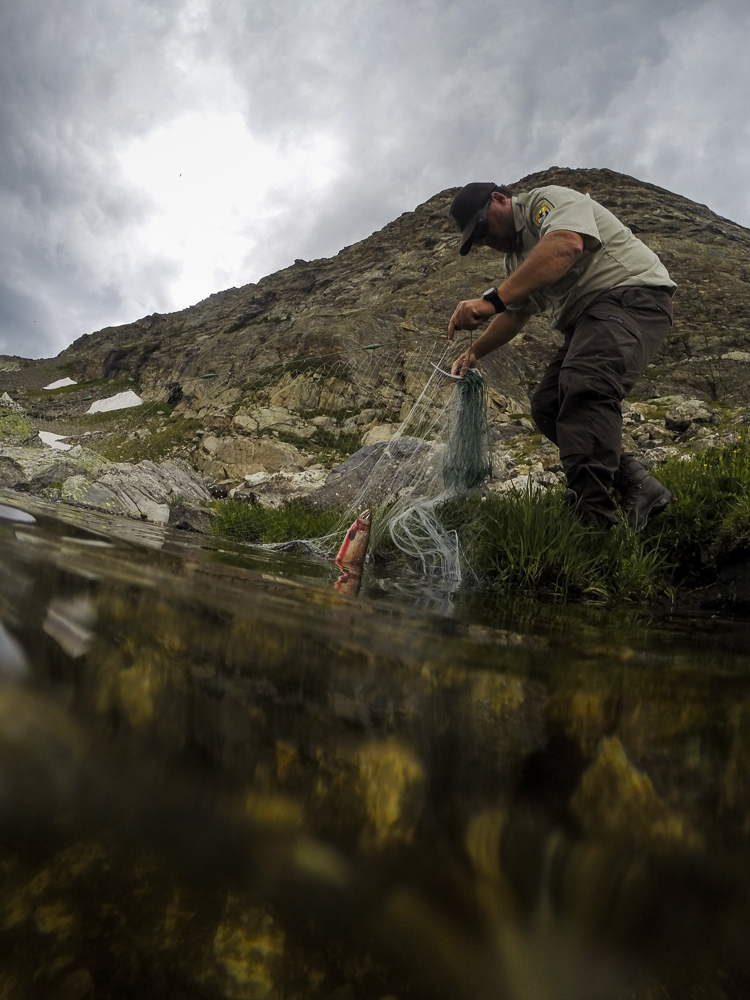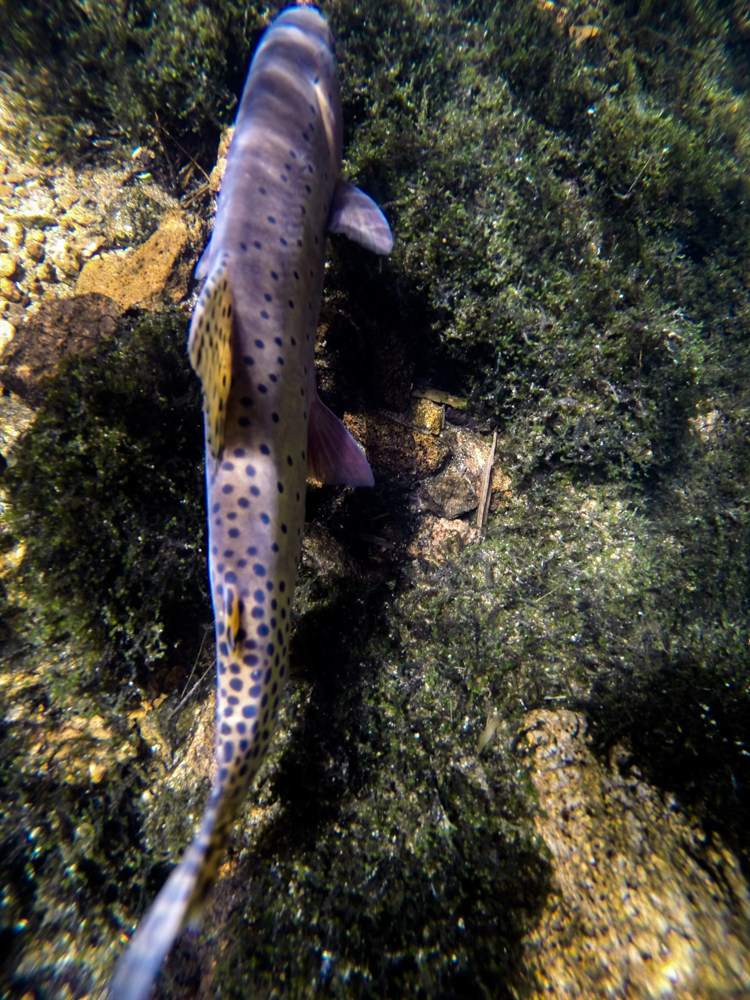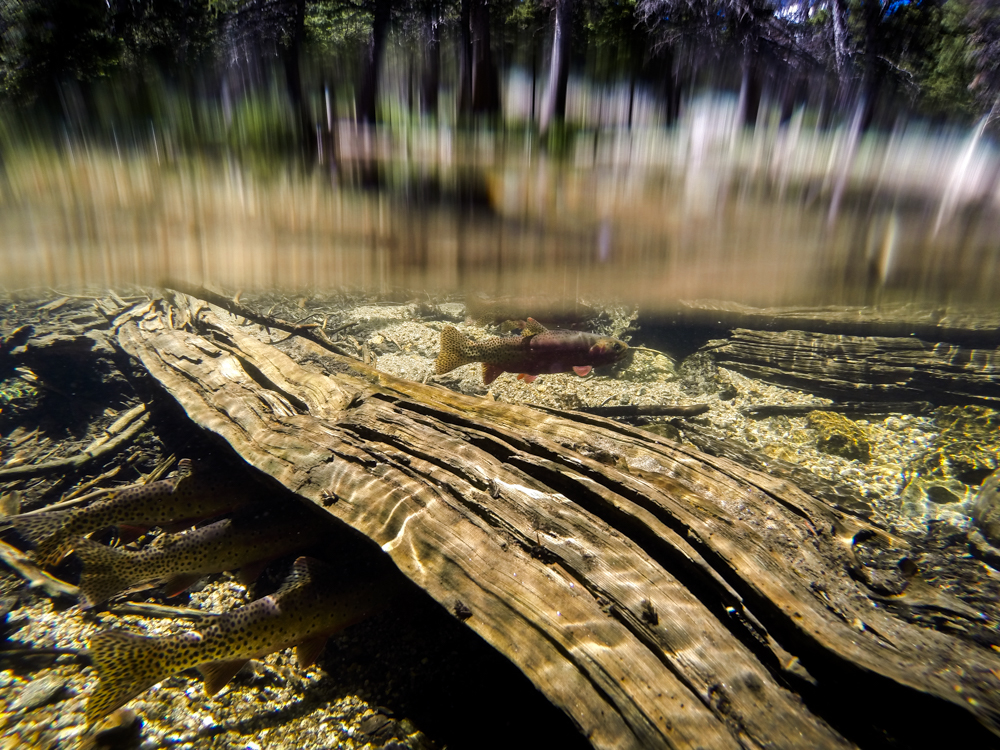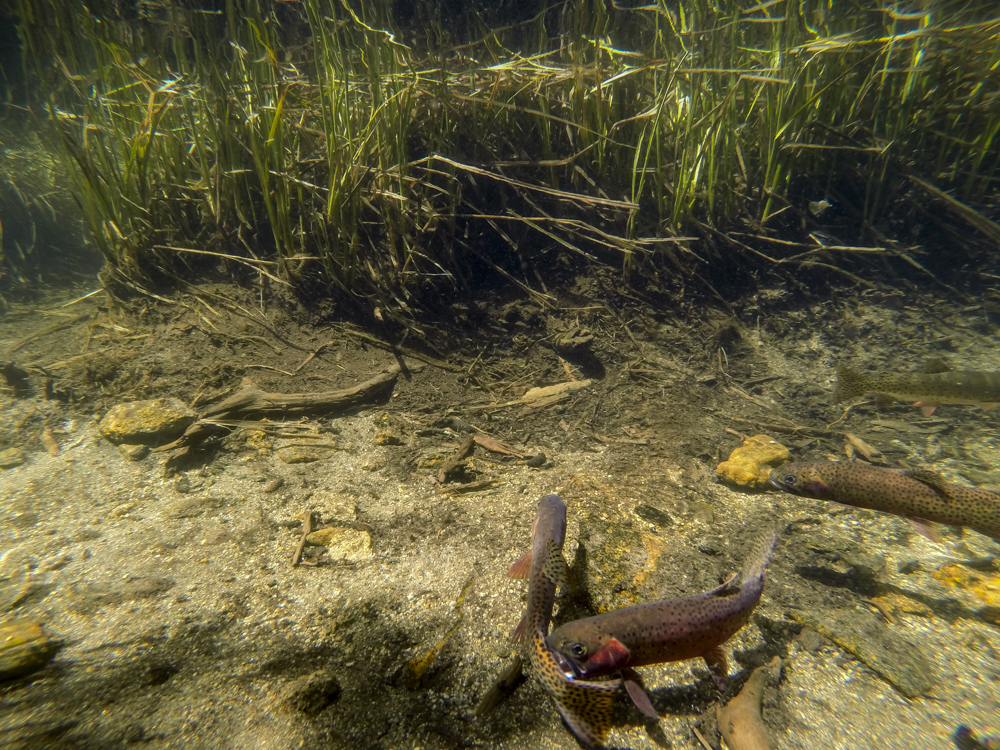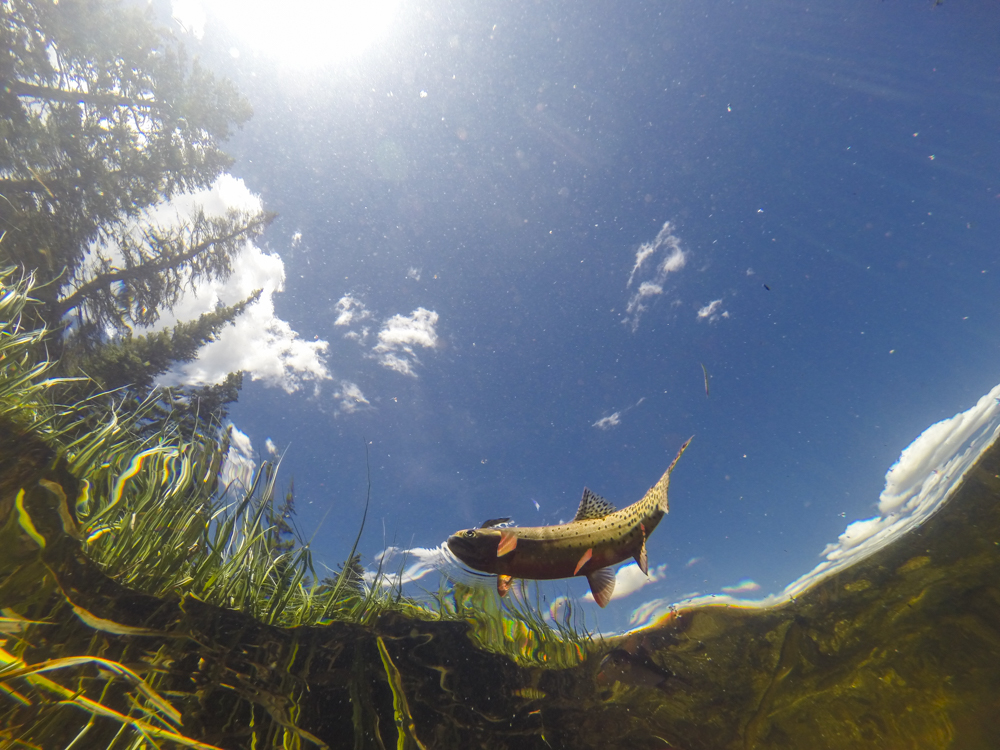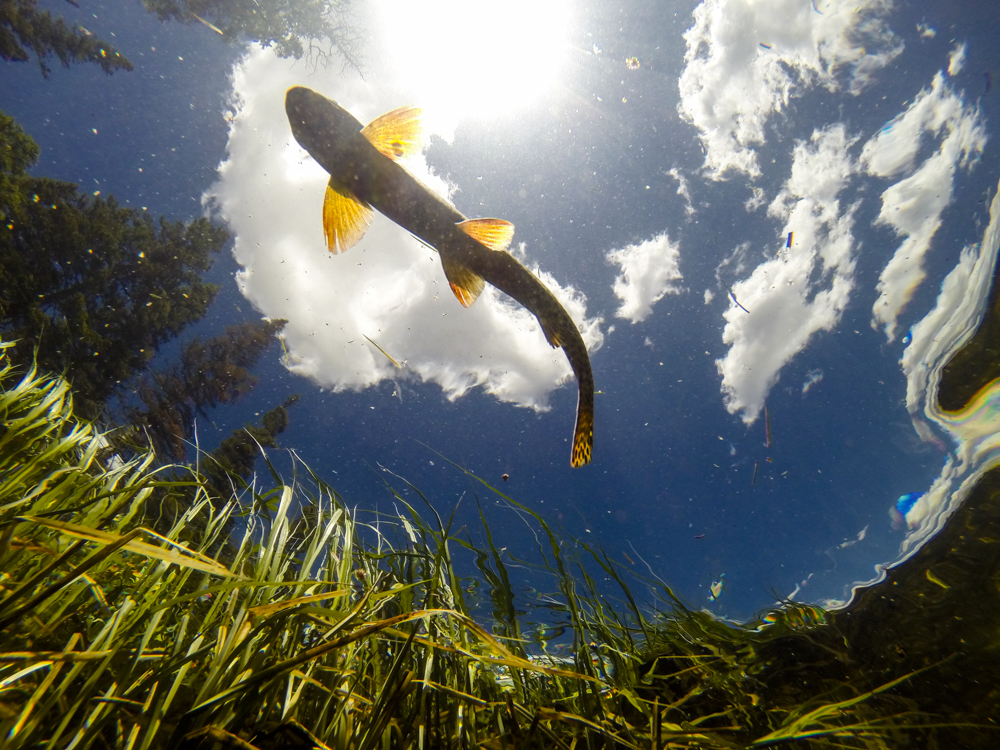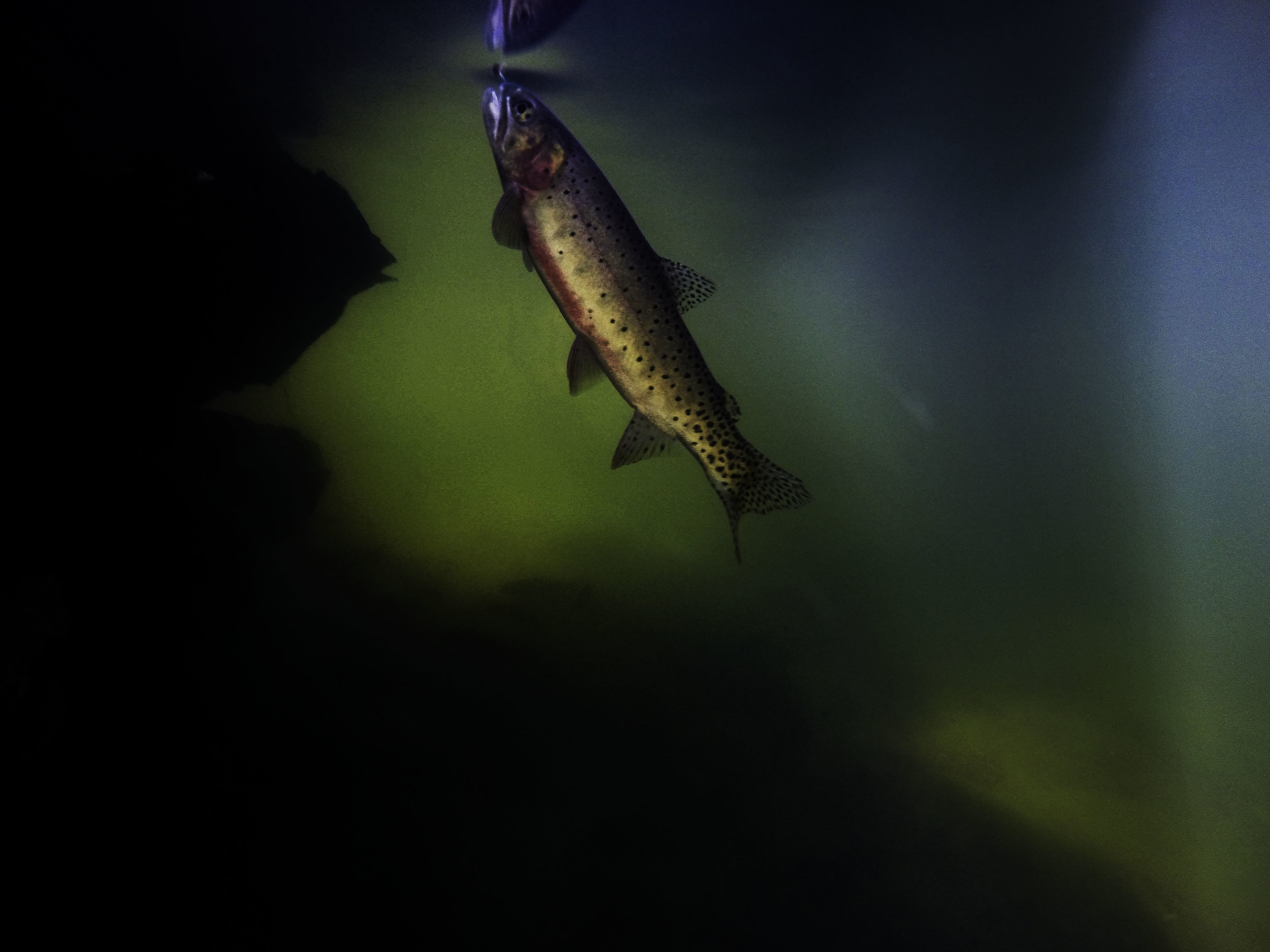Greenback Cutthroat Trout
Greenback Cutthroat Trout
Oncorhynchus clarkii stomias
Click to go to the GALLERY
The greenback cutthroat trout (Oncorhynchus clarkii stomias) is a species back from the dead. Once common in its original range, which included cold water lakes and streams of the Platte and Arkansas River drainages in northeast Colorado and southeast Wyoming, greenbacks wore thought to be extinct by 1930 owing to over harvest, destruction of habitat and most importantly, introduction of non-native species. In 1957 a small remnant population was discovered in Rocky Mountain National Park, and additional populations were discovered through the 1960s and 1970s.
Conservation and restoration efforts began in the 1970s, with numerous drainages throughout northern Colorado stocked with greenbacks after having non-native fish removed. In 2012, a team from CU Boulder conducted a genetic test of an original greenback specimen held at the Smithsonian and collected in 1857. The testing revealed that many of the fish being used in restocking efforts were not pure strain greenback cutthroats, but are rather a mix of other cutthroat species including Colorado River cutthroats and Rio Grande cutthroats.
As determined by genetic testing, the only pure strain of greenback cutthroat trout discovered to date has been found in Bear Creek, a very small tributary of the Arkansas River near Colorado Springs. Oddly, in all likelihood, Bear Creek originally contained no trout at all. Greenback cutthroats were most likely introduced by a local land owner sometime in the late 1800s from a nearby drainage. These fish quietly survived and reproduced for decades as the last members of their species. It is estimated that the total population of Bear Creek never exceeded 700 individuals, and during times of drought may have fallen far below that. Bear Creek strain greenbacks are now being bred and used in continuing restoration efforts.
